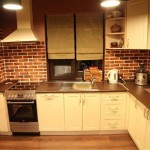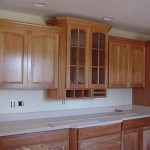White Kitchen Cabinets and White Countertops: A Timeless Combination
The white kitchen, characterized by its clean lines, bright aesthetic, and perceived spaciousness, remains a consistently popular choice in kitchen design. This enduring appeal is heavily influenced by the combination of white kitchen cabinets and white countertops. This pairing offers a versatile canvas upon which homeowners can layer a variety of styles, from modern minimalist to classic farmhouse.
The perceived neutrality of white allows for easy integration with different flooring materials, hardware finishes, and backsplash designs. The combination is also known for its ability to reflect light, making even smaller kitchens feel larger and more airy. However, achieving a successful white-on-white kitchen requires careful consideration of various factors, including the specific shades of white, material choices, and the overall design aesthetic.
Understanding the Nuances of White
While "white" seems like a straightforward color, it encompasses a vast spectrum of shades, undertones, and finishes. Selecting the right white for both cabinets and countertops is crucial for creating a harmonious and visually appealing space. Ignoring these nuances can result in a kitchen that feels sterile, cold, or mismatched.
Whites can be categorized as warm whites, cool whites, or neutral whites. Warm whites typically have yellow or cream undertones, lending a cozy and inviting feel to the kitchen. Cool whites, on the other hand, possess blue or gray undertones, creating a more modern and crisp aesthetic. Neutral whites offer a balanced approach, working well with both warm and cool color palettes.
The interaction between natural and artificial light within the kitchen will also affect the perceived color of the white surfaces. It is recommended to test samples of both cabinet and countertop materials in the actual kitchen space under different lighting conditions before making a final decision. This will help ensure that the chosen shades complement each other and create the desired atmosphere.
Consider the existing architectural elements of the house. If the house leans towards traditional design, then a warmer white shade will be more suitable. If the house is modern, then a cooler white shade will usually be more appropriate. Carefully consider the nuances of white to avoid color clashes.
Material Choices for White Cabinets and Countertops
The material selection for both cabinets and countertops significantly impacts the kitchen's overall aesthetic, durability, and maintenance requirements. Different materials offer varying levels of resistance to stains, scratches, and heat, as well as different price points.
For white kitchen cabinets, popular material choices include painted wood, thermofoil, and laminate. Painted wood cabinets offer a classic and timeless look, with the option of choosing different paint finishes, such as matte, satin, or gloss. Thermofoil cabinets consist of a vinyl layer heat-sealed onto a substrate, typically MDF (medium-density fiberboard). Thermofoil is known for its smooth, non-porous surface, making it easy to clean. Laminate cabinets are another cost-effective option, offering a wide range of colors and patterns. They are also relatively durable and easy to maintain.
White countertops offer a diverse range of material options, each with its own unique characteristics. Quartz countertops have become increasingly popular due to their durability, non-porous surface, and wide range of available colors and patterns. White quartz can mimic the look of natural stone, such as marble, without the associated maintenance requirements. Granite countertops, another natural stone option, offer a unique and luxurious look. However, granite requires regular sealing to prevent staining. Marble countertops are prized for their elegant veining and timeless appeal, but they are more porous and susceptible to staining and etching. Solid surface countertops, made from acrylic or polyester resins, offer a seamless and non-porous surface. They are also available in a variety of colors and patterns and can be easily repaired if damaged.
For example, if durability and stain resistance are priorities, quartz is an excellent option. If the goal is to achieve a luxurious look and the homeowner is willing to invest in regular maintenance, marble could be considered. Carefully consider the pros and cons of each material option before making a selection.
Contrasting Elements and Design Considerations
While a white-on-white kitchen can be visually stunning, incorporating contrasting elements is essential for preventing it from feeling monotonous and sterile. Adding depth and visual interest through different textures, colors, and materials can elevate the overall design and create a more dynamic space.
One effective way to introduce contrast is through the backsplash. A backsplash in a vibrant color, intricate pattern, or textured material can serve as a focal point and break up the expanse of white. Subway tiles in a contrasting color, such as gray or black, or a mosaic tile with metallic accents can add visual interest to the space. Another option is to use a natural stone backsplash, such as slate or travertine, to introduce texture and warmth.
Hardware finishes can also play a significant role in adding contrast and personality to the kitchen. Brushed nickel, stainless steel, or black hardware can complement white cabinets and countertops while providing a subtle yet noticeable contrast. The choice of hardware finish should align with the overall style of the kitchen and the other metal accents in the space, such as the faucet and lighting fixtures.
Flooring provides another opportunity to introduce contrast. Dark hardwood floors, concrete floors, or patterned tiles can ground the space and prevent it from feeling too light and airy. The flooring material should be durable, easy to maintain, and complement the overall color scheme of the kitchen.
Beyond fixed elements, consider the use of contrasting kitchenware, appliances, and decorative items. Colorful cookware displayed on open shelves, a vibrant rug, or a bowl of fresh fruit can add pops of color and personality to the space. These smaller details can significantly impact the overall feel of the kitchen and prevent it from feeling too sterile.
The choice of lighting can also serve as a contrasting element. Warm lighting can make a bright white kitchen feel cozy and inviting, while cool lighting can maintain its crisp and modern aesthetic. Pendant lights hung over the island can add both task lighting and visual interest. Under-cabinet lighting can highlight the countertop and backsplash, creating a warm and inviting ambiance.
Careful attention to these contrasting elements will ensure that the white kitchen feels balanced, inviting, and reflective of the homeowner's personal style.
Finally, when choosing white countertops paired with white cabinets, consider the edge profile of the countertop. A more elaborate edge, such as an ogee or bullnose, can add a traditional touch, while a simpler, square edge reinforces a modern aesthetic.
Achieving a successful white-on-white kitchen is not simply about choosing white surfaces. It requires a comprehensive understanding of the nuances of white, careful material selection, and strategic incorporation of contrasting elements. By considering these factors, homeowners can create a kitchen that is both timeless and functional, a space that will remain stylish and inviting for years to come.

Our 58 Favorite White Kitchens Kitchen Design Ideas

15 Kitchen Countertop Ideas With White Cabinets Granite Types Of Countertops

Countertops For White Cabinets Best Options 2024 Marble Com

5 White Kitchen Cabinet Ideas For Your Norfolk Bath

White Kitchen Cabinets And Countertops A Style Guide

70 White Cabinets With Countertop Going Out Of Style

70 White Cabinets With Countertop Going Out Of Style

5 Kitchen Countertop And Cabinet Combinations Academy Marble Ny

The Countertops For Kitchen With White Cabinets Guilin

White Kitchen Cabinets With Mixed Countertops Transitional
Related Posts








